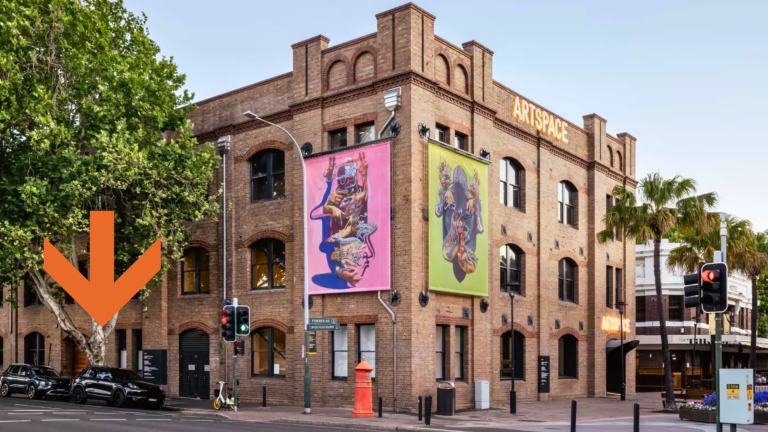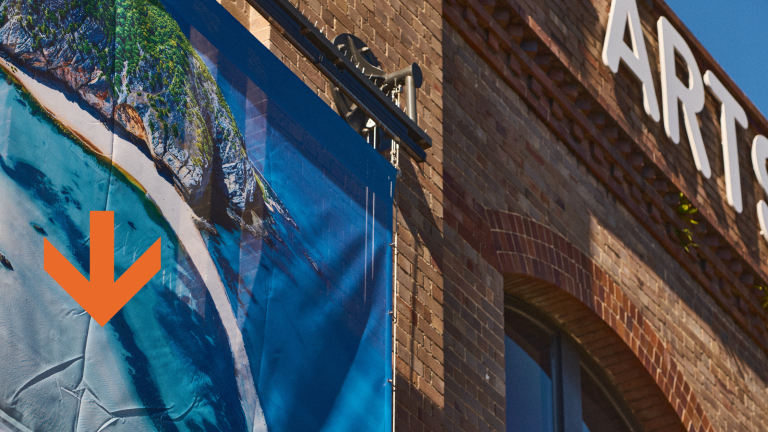If you’re in the process of designing a mesh banner, you might ask yourself, “What Resolution Do I Need for Mesh Banner Image Printing?”. There’s no need to be confused, because this guide has you covered. Getting the right image resolution is critical for achieving professional results that will impress your potential customers. But what exactly does “resolution” mean, and how do you choose the right one for your project? This blog post will guide you through understanding image resolution, what makes the best resolution for banner printing, and how to choose the right file format and best resolution for printing.
What is Image Resolution?
The phrase image resolution refers to the number of pixels contained within a digital image, which directly impacts the print quality and print clarity for various projects. Typically, this is measured in Pixels Per Inch (PPI), which tells you how many pixels appear in one inch of the image. A higher number of pixels per inch means more detail and therefore better print quality!
For printing purposes, you’ll also encounter the term Dots Per Inch (DPI), which refers to the number of dots of ink a printer uses to reproduce the image on banner material.
An easy way to differentiate between the two terms is to remember that PPI refers to the digital image’s resolution, whilst DPI refers to the printing process itself.
Why Resolution Matters in Banner Printing
Resolution matters a lot. Outdoor advertising, where banners need to be clear and legible from a distance, is especially important. This is because the resolution of your image will impact the sharpness and clarity of your final print.
Large format printing, such as mesh banners, always requires a different resolution to smaller prints like business cards. Larger banners are often viewed from a distance, meaning you can use a lower resolution without sacrificing visual quality. However, if you’re printing for close-up viewing, such as pull-up banners for trade shows, a higher resolution is needed to ensure a crisp and clear image.
Choosing the right resolution for printing depends on several factors, including the banner’s physical size, the desired print quality, and the viewing distance. It’s key to remember that image dimensions play a crucial role in determining the appropriate resolution for banners, as they directly impact the print quality based on the viewing distance and type of signage.

Best Resolution for Printing
For any banner project, it’s crucial to determine the best resolution for printing to ensure optimal image sharpness. The general rule of thumb is to aim for a resolution of 300 PPI for small to medium graphics and 100-150 PPI for large format banners. The larger the banner, the lower the required PPI, because large banners are typically viewed from farther away. However, if you’re printing photographs or graphics with fine details, a higher resolution may be necessary.
Here’s a breakdown of recommended resolutions for various banner sizes:
Small Banners (up to 1m): 200-300 PPI for close-up viewing.
Medium Banners (1m to 3m): 150-200 PPI.
Large Banners (over 3m): 100-150 PPI, especially if viewed from a distance.
Always keep in mind that higher resolution means larger file sizes, which are often harder to work with in design programs like Adobe Photoshop and Adobe Illustrator. It’s important to find a good middle between resolution and manageable file size.
Image File Formats for Banner Prints
When preparing your image for printing, the file format you choose plays a significant role in maintaining print quality. For banner printing, vector formats such as AI (Adobe Illustrator), EPS, or PDF are ideal because vector graphics are resolution-independent. This means that no matter how large you scale your image, it won’t lose quality!
Raster images, such as JPEG, PNG, or TIFF, are resolution-dependent. When scaling these images, the resolution of your image can decrease, leading to pixelation or blurriness. If you must use a raster image, ensure they are of high resolution at the banner’s final size.
How to Calculate Proper Resolution for Printing
When preparing your image for printing, it is crucial to consider the appropriate image dimensions and print dimensions. Use the following mathematical equations to calculate the required pixel dimensions:
- Multiply the desired print size (in inches) by the desired resolution (in PPI or DPI).
- For example, if you’re printing a 10-foot (120-inch) banner at 100 PPI, the image should be at least 12,000 pixels wide (120 inches x 100 PPI).
This ensures your image will print clearly without becoming pixelated.
The Role of Viewing Distance in Banner Resolution
Viewing distance plays a significant role in determining the appropriate print resolution for your banner. If your banner will be viewed from afar, such as an outdoor advertisement, stage banners or event signage, you can use a lower resolution without losing quality. For example, a mesh banner that will be hung on a building and viewed from across the street doesn’t need as high a resolution as a banner displayed at eye level in a trade show.
Here’s a general rule to follow for banner resolution based on viewing distance:
Close-up (less than 1 metre): 300 PPI.
Medium distance (1 to 3 metres): 150-200 PPI.
Long distance (more than 3 metres): 100 PPI or less.
By considering the viewing distance, you can optimise the resolution for printing without unnecessarily increasing the file size.
Balancing File Size and Print Quality
Large-format printing often requires high-resolution images, but this can result in enormous file sizes that are challenging to work with. Fortunately, most printers can handle large image files, but it’s still essential to strike a balance between the resolution and the file size.
To reduce file size without sacrificing too much quality, consider these tips:
Use vector graphics where possible. Vector formats maintain quality regardless of size.
Optimise raster images by compressing them slightly or saving them in a more efficient file format like JPEG or PNG.
Resize your image to the correct pixel dimensions before sending it to print. Avoid scaling the image once it’s placed in your banner design to prevent pixelation.
We’re Here to Help!
Understanding the resolution of an image and how it affects quality is crucial for producing stunning, professional banners. Whether you’re printing a large outdoor mesh banner, pull-up banners for a trade show, or vinyl banners for a business event, ensuring the best resolution will lead to clearer, more visually appealing marketing materials.
Whether you need assistance with resolution settings or overall banner design, Mesh Direct is here to help.
Our team takes the extra step to ensure you get the highest quality and durability for your custom banner projects. If you have any questions about the right resolution for your next project, Contact Us to reach out to our team for expert advice!






